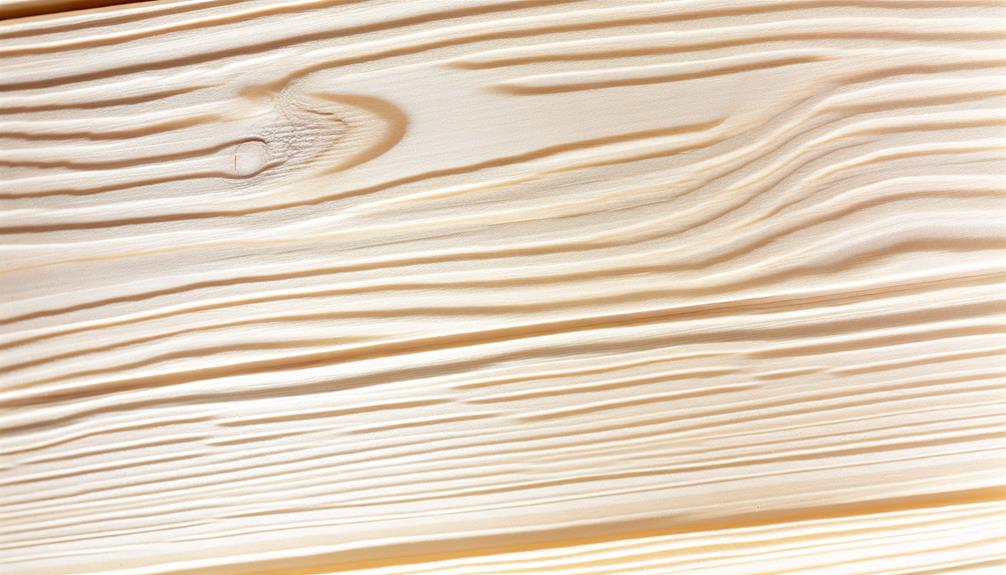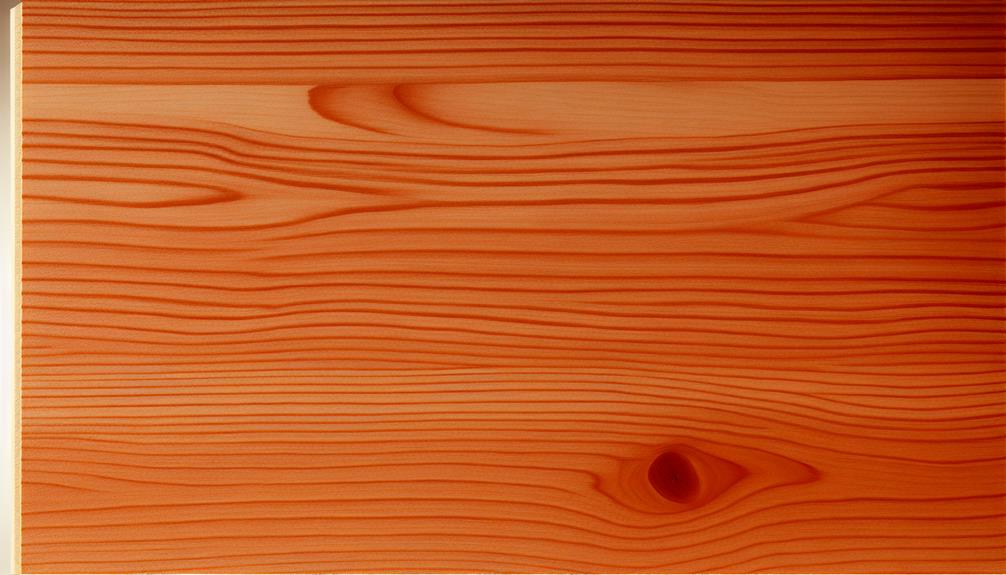When it comes to saunas, the choice of wood is as crucial as laying a solid foundation for a house. Imagine the ambiance the right wood can create in a sauna—tranquil and inviting.
Now, picture the wrong wood, and suddenly, the experience feels off. So, which wood species are favored for saunas, and why? Let's explore the intriguing world of sauna woods together to uncover the secrets behind creating the perfect sauna environment.
Key Takeaways
- Cedar wood is renowned for durability, decay resistance, and excellent insulation, making it a top choice for quality and longevity in saunas.
- Hemlock wood stands out with its cost-effectiveness, moisture resistance, and elegant white color, ideal for indoor and infrared saunas.
- Nordic spruce wood offers strength, resilience, and durability, treated for enhanced resistance, favored in Finnish sauna culture for aesthetics and longevity.
- Common aspen wood, with its bright, non-toxic, and moisture-resistant qualities, is ideal for public and infrared saunas due to its durability and minimal maintenance requirements.
Cedar – Western Red Cedar & Eastern White Cedar
When constructing a sauna, opt for Western Red Cedar or Eastern White Cedar for their exceptional durability and resistance to decay. Cedar wood, whether Western Red or Eastern White, is a top choice for sauna construction due to its natural resistance to insects, decay, and moisture.
Western Red Cedar is particularly favored for its insulation properties, which help maintain high sauna temperatures effectively. This wood type not only provides a cozy sauna experience but also stands the test of time due to its durability.
On the other hand, Eastern White Cedar isn't only durable but also environmentally friendly as it's a renewable resource that replenishes approximately every 35 years. Both Western Red Cedar and Eastern White Cedar are frequently used in the construction of traditional Finnish saunas, known for their quality and longevity.
Hemlock
Considered a cost-effective and moisture-resistant option for sauna construction, Hemlock wood boasts an elegant white color and is favored for its stability and clean appearance in sauna environments. This wood type is known for its durability, affordability, and resistance to moisture-related issues, making it a popular choice among sauna enthusiasts. Hemlock's attractive look, low maintenance requirements, and resistance to decay further contribute to its appeal for sauna construction projects.
| Hemlock | Characteristics |
|---|---|
| Color | White |
| Moisture Resistance | High |
| Stability | Excellent |
| Maintenance | Low |
Hemlock wood, often used in combination with firs to create Hem-Fir, is ideal for indoor and infrared saunas due to its minimal scent, which is advantageous when strong aromas are not desired. Its clean appearance and ability to withstand moisture make it a reliable option for creating a serene sauna environment.
Nordic Spruce

Hemlock wood's counterpart, Nordic Spruce, stands out as a traditional choice for saunas due to its light coloring and inherent insect-repellent properties. Nordic Spruce is a staple in Finnish sauna culture, prized for its durability and aesthetic appeal.
Here are some key points about Nordic Spruce:
- Light Coloring: Nordic Spruce maintains its light color over time, adding a bright and inviting feel to the sauna environment.
- Natural Insect-Repellent: This wood type naturally deters insects, contributing to a cleaner and more hygienic sauna experience.
- Durability: Nordic Spruce is known for its strength and resilience, making it a reliable option for sauna construction that can withstand the heat and moisture.
- Thermal Treatment: To enhance its resistance to moisture and insects, Nordic Spruce can undergo thermal treatment, ensuring its longevity and performance in saunas.
Nordic Spruce's combination of light coloring, insect-repellent properties, durability, and aesthetic appeal makes it an excellent choice for creating a relaxing sauna environment that's both visually appealing and functional.
Common Aspen
Common Aspen, known for its bright, non-toxic, and resin-free properties, is a highly favored material for sauna construction due to its moisture resistance and durability. Aspen wood's ability to withstand attacks from microorganisms makes it ideal for both public and infrared saunas. Its light color is a sought-after feature, as it helps maintain a fresh and inviting look over time. The durability and rot resistance of Common Aspen make it a reliable option for sauna interiors, ensuring longevity and minimal maintenance requirements.
Common Aspen Properties Table:
| Property | Description |
|---|---|
| Bright Appearance | Light color that enhances the overall aesthetic of the sauna. |
| Non-toxic | Safe for use in saunas without emitting harmful substances when heated. |
| Resin-free | Lack of resin reduces the risk of odors or emissions when exposed to heat. |
| Moisture-Resistance | Ability to repel moisture, preventing warping or damage over time. |
Douglas Fir

With its exceptional strength and durability, Douglas Fir stands out as a top choice for sauna construction, offering a natural and calming aesthetic with its light brown color and minimal scent. When considering Douglas Fir for your sauna project, you benefit from its remarkable qualities:
- Strength and Durability: Douglas Fir is highly valued for its strength and durability, ensuring your sauna will withstand regular use over time.
- Rot Resistance: When kiln-dried, Douglas Fir becomes resistant to rot, enhancing its longevity and minimizing maintenance needs.
- Straight Grain: The straight grain of Douglas Fir provides a visually appealing and uniform look to your sauna design.
- Stability and Reliability: Douglas Fir is known for its stability and reliability, making it a dependable choice for saunas where consistent performance is essential.
Incorporating Douglas Fir into your sauna not only adds a touch of elegance with its light brown color but also guarantees a durable and long-lasting sauna experience.
Frequently Asked Questions
What Is the Best Wood to Use for a Sauna?
For the best wood in a sauna, cedar stands out with benefits like heat retention, aesthetic appeal, and moisture resistance. Its durability, customization options, and moderate cost make it a top choice. Installation, maintenance, and sourcing are crucial factors.
What Is the Least Toxic Wood for a Sauna?
For the least toxic wood in saunas, basswood is an ideal choice due to its hypoallergenic nature. It doesn't emit harmful fumes or toxins when exposed to high heat, making it safe for sensitive skin.
What Is Sauna Wood Treated With?
In saunas, wood is treated with high-temperature processes like thermowood treatment. This enhances durability, stability, heat resistance, and moisture resistance. It also improves health benefits, aesthetic appeal, sustainability, and maintenance requirements. It ensures durability, offers sourcing options, eases installation, and considers cost.
How Does Sauna Wood Not Rot?
To prevent sauna wood from rotting, control moisture levels, maintain proper ventilation, and apply natural oils for preservation. Ensure heat insulation, resist decay with rot-resistant woods, and manage humidity. Sealing and cleaning extend wood longevity.
Conclusion
In conclusion, the selection of wood for saunas is crucial to ensure a safe and enjoyable experience.
Just as a ship needs sturdy planks to weather the stormy seas, a sauna requires the right wood to withstand the intense heat and provide comfort to its users.
Choose wisely, and your sauna will be a sanctuary of relaxation and rejuvenation.

Leave a Reply